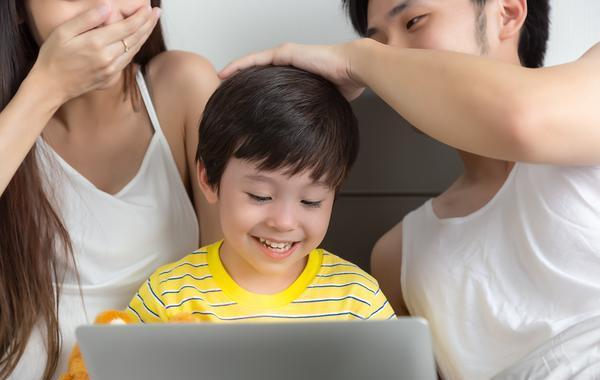We all have embarrassing pictures of our childhood out there. Yet where before those pictures would sit in albums or shoeboxes waiting for a slow time over the holidays or a weekend, now they can be visible to the entire world. Before you share that snapshot, consider the following.
Sorting Concern From Panic
There are two basic facts about our online privacy: The first is that we begin building a digital footprint practically from birth, which can begin with an ultrasound posted online and can end with a Facebook page turned into a memorial. The second is the possible psychological and social impact of this is still theoretical.
Facebook wasn’t available to the general public until 2006, for example, so the first generation that’s never known a world without it is just entering middle school. Nor is it guaranteed that Facebook will still be around by the time they’re considering colleges; it wasn’t so long ago that MySpace and Friendster were ascendant, after all.
This means you should take any grandiose claims about how social media will affect us in the future with a grain of salt. But it also means you need to consider the future impact of anything you post, and what data is generated.
Start With Yourself
Kids notice what we do, so consider how you share online, both consciously by posting to social media, and passively by using fitness trackers, location apps, and other tools. Talk your kids through what you share, why you share it, and how you weigh the possible risks against the rewards. Make it clear that there is no free lunch; if somebody is offering a digital service for free, it’s because they think something they collect in turn is more valuable.
Remember, as well, that just because your privacy settings filter out the general public doesn’t mean various organizations won’t have access to your data anyway.

Think About The Future
Until they’re old enough to sign up for their own social media accounts, you largely control how your kids are seen online. So start by asking yourself a simple set of questions before you post. Would you want this shared about you when you were that age? How will people who are not part of your family interpret this? Is this information, however innocent, that people really need to know about?
This should extend not just to social media postings, but their personal devices, smart toys, digital tracking devices, and other tools marketed to parents. Look closely at where the data goes and what you’re agreeing to allow to be done with it before you make use of that tool.
Teach A Thoughtful Approach
As kids get older, teaching them to think ahead will be your most rewarding strategy. Show them where to find privacy settings, what those settings do, and how to configure them. Install a third-party parental control app to block certain apps and explain why. Teach them about discussing certain topics with strangers, and when to come to you when something said or done worries them. The more tools they have, the safer they’ll be as they become adults and enter the digital world on their own.
To learn more about how parental control apps like Screen Time can help, try it for free!


Join the conversation